If the Covid 19 pandemic has shown companies one thing, it is that HR departments play a crucial role in mastering crises. Whether it’s an overnight switch to remote work, the administrative and human challenges around reduced office or working hours, or efforts to translate corporate culture to remote work, everywhere HR leaders carry the responsibility for a smooth business continuation.
To leave enough time for these important tasks, there are more and more tools, platforms and software solutions that can assist HR managers in efficiently automating routine tasks. Fabian Zeitler, Senior Communications Director at PIABO, presents his five HR tech trends that companies should have on their radar in 2021.

HR operating systems – all-in-one from application to payroll accounting
The fundamental problem in many HR departments is: There is often no time left for taking care of the essentials. According to a Bitkom survey commissioned by Personio, administrative tasks such as maintaining personnel files, planning absences and the tiresome topic of document management account for an unbelievable 42 per cent of HR employees’ working hours on average. In turn, the most important task is often neglected although it lies precisely at the core of good HR: the work with employees.This is exactly where all-in-one HR software solutions like Personio come in. Processes throughout the entire employee cycle, from job interviews to onboarding to payroll, are digitised and made more efficient. Companies save valuable time and therefore money. A concept that seems to strike a nerve: only recently Personio reached a billion-dollar valuation, making it the most valuable HR tech company in Europe.
Recruiting software – structured hiring and more diversity, equality & inclusion
Especially within the last year, recruitment has fundamentally changed due to Corona – and staying at home. Whereas the focus of any recruiting process used to be on getting to know each other in person, many companies had to swerve to remote approaches in the last 12 months. Quite a few of them were even forced to put their recruitment plans on hold for some time. Yet just now it is increasingly important for companies to find the right talent for (the few) open positions. Platforms such as Greenhouse or Recruitee ensure that the entire recruiting process, including onboarding, is as structured and smooth as possible. They help to professionalise, streamline and – where possible – automate these processes. At the same time, they can help minimise biases in the hiring process. For example, Greenhouse offers the possibility to establish objective assessment criteria in the form of scorecards via various tools. Further, they enable one to evaluate one’s own progress in recruiting according to DE&I standards.
Workforce management solutions – using AI to improve staff scheduling
A major pain point, especially for companies in the service sector: the creation of duty rosters. Countless factors have to be taken into account, including demand and capacity utilisation in the respective company, availability of employees and personal sensitivities, as well as compliance with hygiene rules – especially in Corona times. On the one hand, this costs valuable time and, if poorly implemented, can lead to major economic problems. This is where workforce management solutions like Quinyx come into play. Based on artificial intelligence, a self-learning system provides demand forecasts, optimises the deployment of employees and creates customised duty rosters taking all parameters into account. This helps companies to make better staffing and budget decisions in the long term.
Social intranet – more interaction through internal communication
As the number of employees working from home has increased in the course of the pandemic, internal communication in companies has become even more important. Reasons are at hand: where people no longer sit together on a daily basis and information can be shouted down the hall or across the table, communication needs to find new channels, i.e. digitally. Social intranet offerings such as COYO‘s combine social media functionalities with the classic idea of a company’s own intranet. In practice, this means that employees have access to important information at any time and from anywhere, but at the same time they can stay in contact with each other. A classic intranet with top-to-bottom communication becomes an interactive place for exchange. This ensures increased employee engagement, creates flexibility and ultimately strengthens employee loyalty.

COYO
Task management platforms – better overview of internal tasks
Many digital companies have experienced a boom in the last 12 months. They launched the right products at the right time, accelerated their businesses – and were left with multiple tasks, resulting in to-dos-list that are exploding. This is as true for staff participation as it is for most other departments, as it is not uncommon for tasks to be cross-divisional, for example when working together on a job advertisement. Task management platforms such as MeisterTask can be helpful in order not to lose the overview. They can be used to easily assign tasks to different projects and individual colleagues. All those involved are always informed about the current status. This makes processes more efficient and saves an enormous amount of time. Fabian Zeitler is Senior Communications Director at PIABO. For almost seven years, he has been supporting clients from a wide range of fields. His focus areas include Software as a Service (SaaS) and HR-Tech. Do you have questions or remarks? Or maybe you are looking for PR for your HR-Tech solution? Don’t hesitate to get in touch with Fabian.


